A quick history
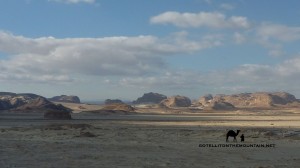 The Sinai is a great corridor of world history. It was one of the key routes through which humans left Africa; in later ages, prophets, kings and conquering armies all passed this way, making journeys that defined the history of the Middle East; even the history of the wider world. The Sinai has borne witness to great events for thousands of years, but for the most part its history remains unrecorded; or recorded in chapters scattered here or there. Writing it up in one place would be a huge task; an encyclopedia would be needed to document just a fraction of its past. What’s below is just a skeletal outline. Still, it’ll still give a bit of context and a sense of what’s been before.
The Sinai is a great corridor of world history. It was one of the key routes through which humans left Africa; in later ages, prophets, kings and conquering armies all passed this way, making journeys that defined the history of the Middle East; even the history of the wider world. The Sinai has borne witness to great events for thousands of years, but for the most part its history remains unrecorded; or recorded in chapters scattered here or there. Writing it up in one place would be a huge task; an encyclopedia would be needed to document just a fraction of its past. What’s below is just a skeletal outline. Still, it’ll still give a bit of context and a sense of what’s been before.
 EARLY PEOPLES – The Sinai has records of settlement from the Stone Age, but its population increased most notably with the dawn of the world’s great metal ages. Settlers came looking for mineral deposits and found them in abundance. They lived across the peninsula, excavating copper and other metals to make tools and weapons. Their traces are still seen in small tombs – known as nawamis – across the region. These usually stand on high stretches of ground, gazing out over beautiful desert panoramas; and almost always with their doorways facing west, towards the setting sun.
EARLY PEOPLES – The Sinai has records of settlement from the Stone Age, but its population increased most notably with the dawn of the world’s great metal ages. Settlers came looking for mineral deposits and found them in abundance. They lived across the peninsula, excavating copper and other metals to make tools and weapons. Their traces are still seen in small tombs – known as nawamis – across the region. These usually stand on high stretches of ground, gazing out over beautiful desert panoramas; and almost always with their doorways facing west, towards the setting sun.
 THE PHARAOHS – The Sinai’s minerals didn’t go unnoticed by the Pharoahs, whose kingdoms were rising in mainland Egypt. They arrived in the mountains of the peninsula over 4000 years ago, from the times of the Old Kingdom, building mines and temples, leaving carved tablets on the cliffs and scratching hieroglyphics into the rocks, some of which are still visible in places like Serabit el Khadem. The Sinai remained in the designs of the Pharaohs through successive kingdoms and they stayed for centuries.
THE PHARAOHS – The Sinai’s minerals didn’t go unnoticed by the Pharoahs, whose kingdoms were rising in mainland Egypt. They arrived in the mountains of the peninsula over 4000 years ago, from the times of the Old Kingdom, building mines and temples, leaving carved tablets on the cliffs and scratching hieroglyphics into the rocks, some of which are still visible in places like Serabit el Khadem. The Sinai remained in the designs of the Pharaohs through successive kingdoms and they stayed for centuries.
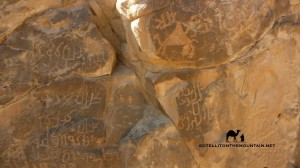 THE NABATAEANS – Famous for building Petra in Jordan, the Nabataeans probably settled in the Sinai about 200BC, on trade routes across the region into Egypt. They lived in both North and South Sinai, usually in big oases. Nabataean civilisation dwindled after the Romans conquered Egypt in 30BC but you’ll still see Nabataean graffiti over the region today. There’s an old Nabataean temple on the top of Jebel Serbal and an old Nabataean port in Dahab.
THE NABATAEANS – Famous for building Petra in Jordan, the Nabataeans probably settled in the Sinai about 200BC, on trade routes across the region into Egypt. They lived in both North and South Sinai, usually in big oases. Nabataean civilisation dwindled after the Romans conquered Egypt in 30BC but you’ll still see Nabataean graffiti over the region today. There’s an old Nabataean temple on the top of Jebel Serbal and an old Nabataean port in Dahab.
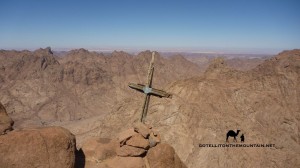 THE CHRISTIANS – Christians arrived from early centuries, attracted by the Sinai’s Exodus legends. Numbers increased when Rome began its persecutions, with the mountains of the Sinai offering a perfect place of refuge. Later, the Roman Empire converted to Christianity, continuing its rule in Egypt as the Byzantine Empire. Christianity became more open in the Sinai from this time and chapels and monasteries began to thrive. Christianity remains the oldest surviving faith in the Sinai with its most famous religious institution – the Monastery of St Katherine – dating back to 565AD.
THE CHRISTIANS – Christians arrived from early centuries, attracted by the Sinai’s Exodus legends. Numbers increased when Rome began its persecutions, with the mountains of the Sinai offering a perfect place of refuge. Later, the Roman Empire converted to Christianity, continuing its rule in Egypt as the Byzantine Empire. Christianity became more open in the Sinai from this time and chapels and monasteries began to thrive. Christianity remains the oldest surviving faith in the Sinai with its most famous religious institution – the Monastery of St Katherine – dating back to 565AD.
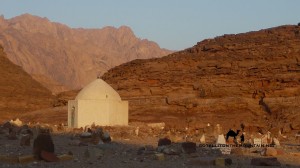 THE ARRIVAL OF ISLAM – As Christianity blossomed in the Sinai Islam was on the rise across the sea in Arabia. The Prophet Mohammed had revealed the faith to its people and, after his death in 632AD, a series of Islamic Conquests soon spread it across much of the wider Middle East. Egypt became an Islamic land around this time and was ruled thereafter by different Islamic governments, including the Fatimids, Ayyubids and Mameluks. Later, in 1517, the Turkish leader Sultan Selim conquered Egypt – and most of the Middle East – in a new, more nationalistic conquest.
THE ARRIVAL OF ISLAM – As Christianity blossomed in the Sinai Islam was on the rise across the sea in Arabia. The Prophet Mohammed had revealed the faith to its people and, after his death in 632AD, a series of Islamic Conquests soon spread it across much of the wider Middle East. Egypt became an Islamic land around this time and was ruled thereafter by different Islamic governments, including the Fatimids, Ayyubids and Mameluks. Later, in 1517, the Turkish leader Sultan Selim conquered Egypt – and most of the Middle East – in a new, more nationalistic conquest.
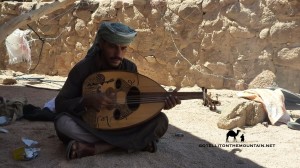 THE BEDOUIN – After the Islamic Conquests Sinai was overlooked by most governments. Egypt really meant the Nile: the Sinai was a far-flung hinterland of little interest. This remined the status-quo in early Ottoman times and – in this absence of central authority – many Bedouin tribes began to wander in, arriving from regions such as the Hejaz of Arabia. Most Bedouin tribes in the Sinai are thought to have settled from the 14th century onwards. Though some claim roots that go back much further.
THE BEDOUIN – After the Islamic Conquests Sinai was overlooked by most governments. Egypt really meant the Nile: the Sinai was a far-flung hinterland of little interest. This remined the status-quo in early Ottoman times and – in this absence of central authority – many Bedouin tribes began to wander in, arriving from regions such as the Hejaz of Arabia. Most Bedouin tribes in the Sinai are thought to have settled from the 14th century onwards. Though some claim roots that go back much further.
 MODERN HISTORY – The Ottomans were pushed out of Egypt by the British, who occupied Egypt from the 19th century. In turn, an Egyptian uprising forced the British to grant independence in the 1920s; but in reality they remained, pulling strings until the a new Egyptian revolution in the 1950s. President Nasser came to power after this – and with his Arab allies – fought a war against Israel in 1967, which ended with Israel occupying the whole of the Sinai. There was another war in 1973, in which Egypt claimed a victory. Israel remained in much of Sinai as an occupier but a peace deal was later reached that returned Sinai to Egypt. The last Israeli tanks left Taba in 1982. Now, in 2014, after the uprising against President Hosni Mubarak, then his successor, Mohammed Morsi, Egypt and the Sinai are being re-made and the pages of its rich history continue to be written.
MODERN HISTORY – The Ottomans were pushed out of Egypt by the British, who occupied Egypt from the 19th century. In turn, an Egyptian uprising forced the British to grant independence in the 1920s; but in reality they remained, pulling strings until the a new Egyptian revolution in the 1950s. President Nasser came to power after this – and with his Arab allies – fought a war against Israel in 1967, which ended with Israel occupying the whole of the Sinai. There was another war in 1973, in which Egypt claimed a victory. Israel remained in much of Sinai as an occupier but a peace deal was later reached that returned Sinai to Egypt. The last Israeli tanks left Taba in 1982. Now, in 2014, after the uprising against President Hosni Mubarak, then his successor, Mohammed Morsi, Egypt and the Sinai are being re-made and the pages of its rich history continue to be written.